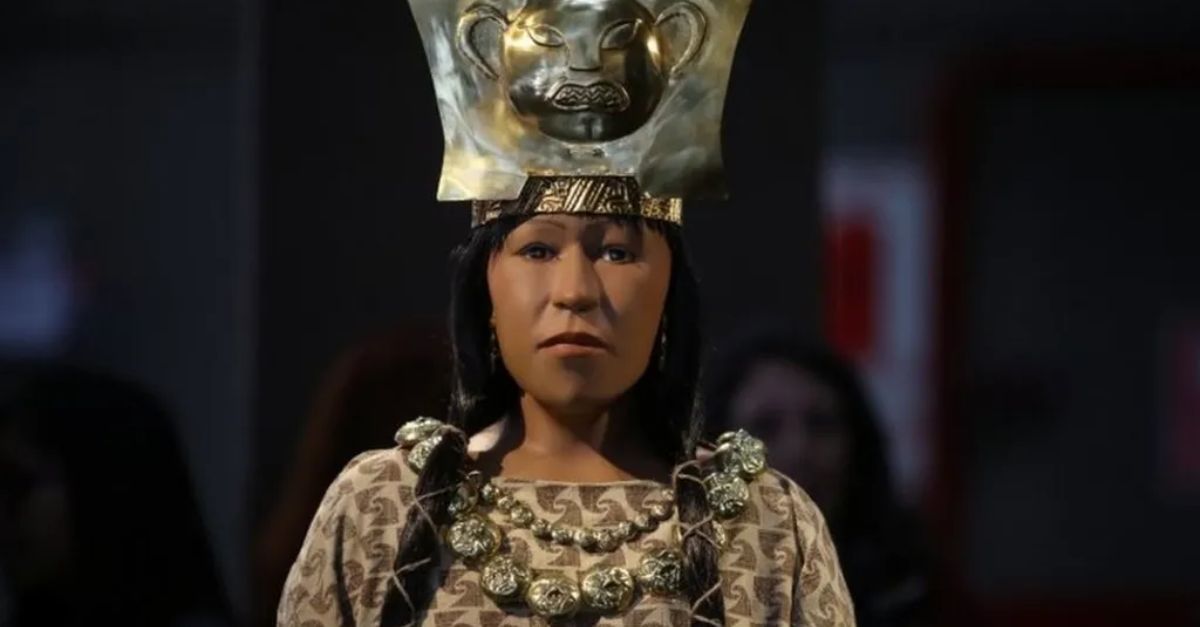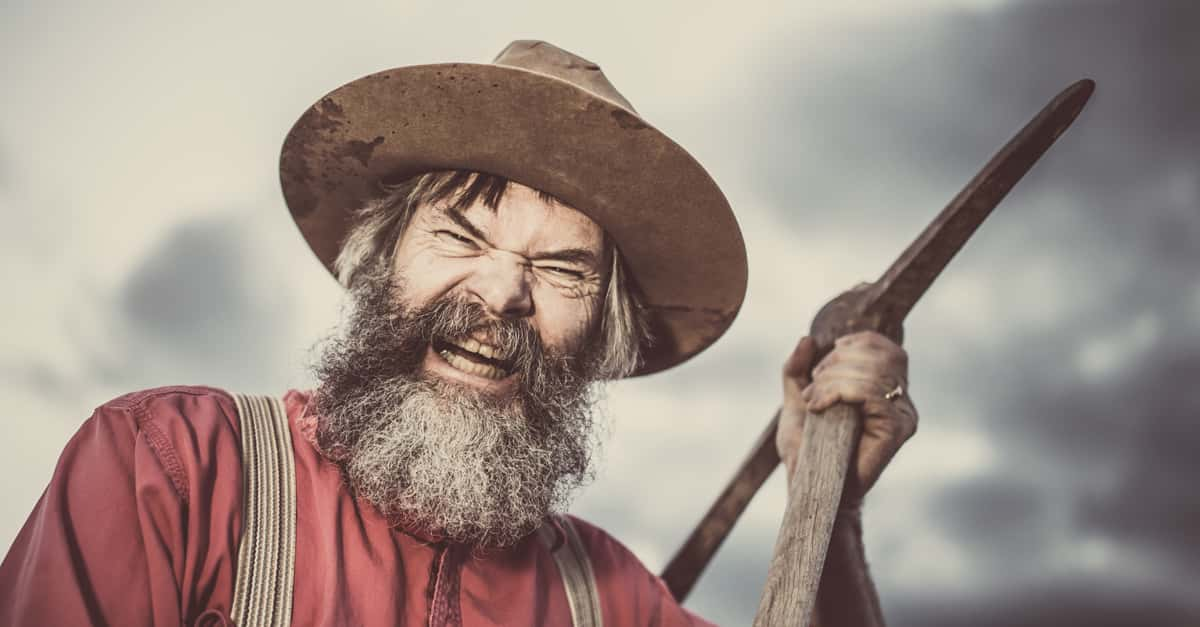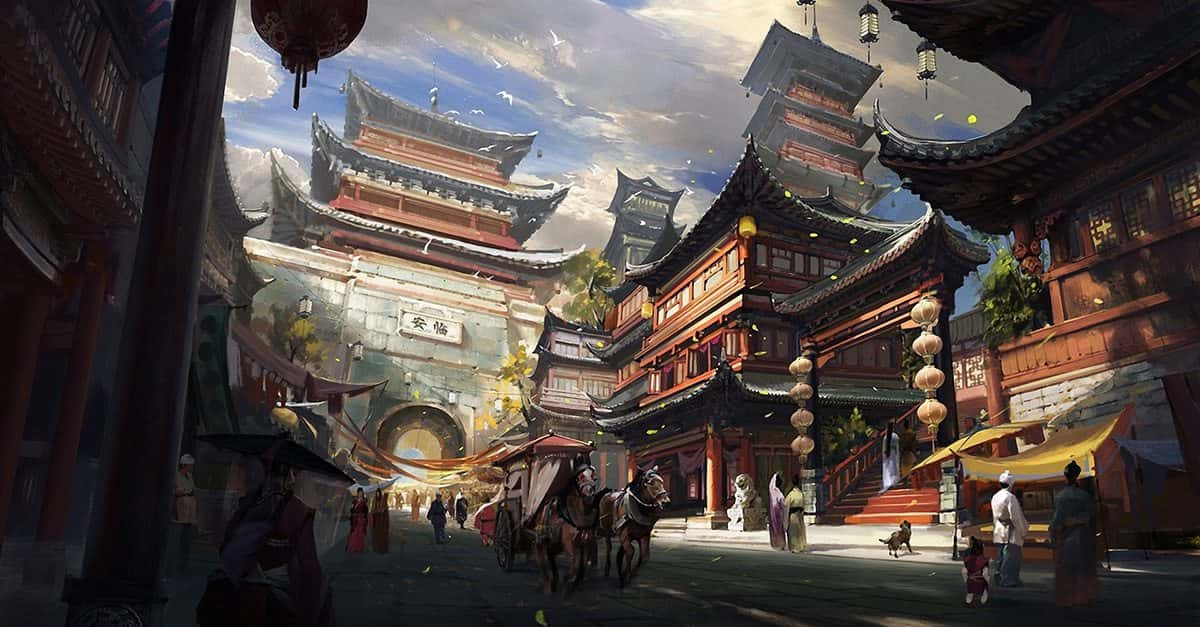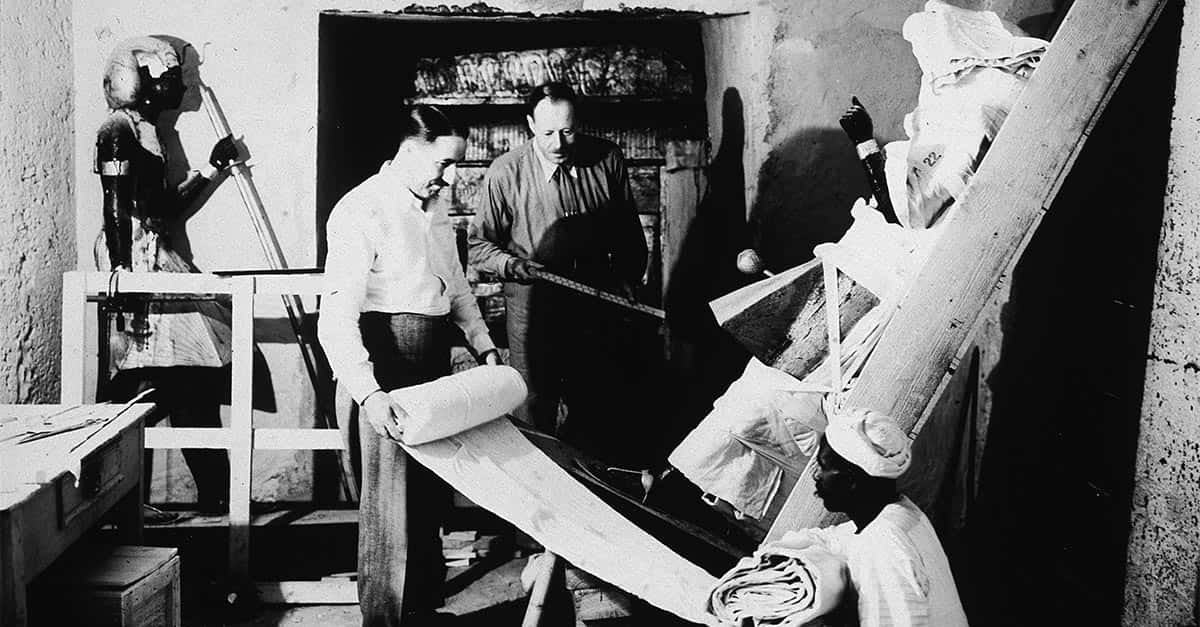A Throne Buried By Time
In a dusty corner of Peru’s Ancash Region, archaeologists found something unexpected—a painted hall and the unmistakable image of a woman in power. Now, whatever history knew of ancient Andean rule must be re-examined.

Throne Room Discovery In Panamarca
At the base of Peru’s Ancash highlands, archaeologists uncovered a 1,300-year-old ceremonial hall. What lay beneath layers of silt was a throne room of adobe and paint, preserved since 700 CE (approx.). Its structure pointed to formalized power rooted in ritual space and visual control.
Throne Room Discovery In Panamarca (Cont.)
The room’s orientation provided restricted access and controlled visibility, with its murals positioned to face viewers as they entered the chamber. Archaeologists noted that the room’s construction aligns with known Moche principles of social hierarchy, where space itself was used to describe elite authority.
Traces Of A Crowned Female Figure
On the inner pillars of the chamber, faded images began to reappear. A woman adorned with a crescent crown sat in a raised position while male attendants offered her ritual objects. This visual pattern is consistent with other elite female depictions at Huaca de la Luna.
 Burkhard Mücke, Wikimedia Commons
Burkhard Mücke, Wikimedia Commons
Traces Of A Crowned Female Figure (Cont.)
In both sites, the women depicted are seated and associated with offering scenes—hallmarks of high authority in Moche art. The positioning near ceremonial architecture suggests they were not deities but influential individuals whose status was reinforced by their proximity to ritual action.
 Burkhard Mücke, Wikimedia Commons
Burkhard Mücke, Wikimedia Commons
Restoration Unlocked Hidden Layers
Using advanced restoration techniques, researchers revealed vibrant murals with a palette of cinnabar red and clay yellow, which had been previously obscured by centuries of dust. These efforts uncovered clearer portrayals of garments and hand posture that had once faded beyond recognition.
Human Hair And Greenstone On The Seat
Traces of human hair and cotton thread were found embedded in the adobe throne, along with fragments of greenstone beads. These items, typically reserved for elite ritual use, imply direct contact with a figure of high status who repeatedly occupied this space during the ceremony.
A Hall Meant For Public Rituals
Unlike residential spaces, this chamber had neither storage nor a hearth. Its long, narrow entrance led to a single focal point: the throne. Murals faced outward, designed for the benefit of observers. This spatial logic aligned with other ceremonial precincts constructed for the collective display of elite authority.
Local Oral Reports Preceded Excavation
Local knowledge often informs archaeological surveys, and in 2022, geospatial mapping at Panamarca confirmed the site’s ceremonial layout. Although not all reports are documented, community awareness of unusual features in the landscape proved to be relevant in identifying key areas of interest during fieldwork.
Iconography Includes Supernatural Figures
In one striking mural, a figure with wings and a hooked beak stands beside the seated queen. Bird-human hybrids appear throughout Moche art and often serve as liminal beings—entities believed to move between earthly and divine realms in ceremonial myths tied to transcendence and ascent.
Symbols Of Ritual And Political Power
The queen is depicted raising a goblet, her hand poised mid-offering, while others kneel. The scene mirrors established Moche presentation rituals, where vessels symbolized divine communication. Her central placement and stillness evoke a sense of command, while her gesture links her directly to ritual action and sacred authority.
 The Lady of Cao | Go Wild by Go Wild
The Lady of Cao | Go Wild by Go Wild
Architecture Designed For Visibility
Pillars displaying her image weren’t enclosed. They faced outwards toward the plaza to expose murals to light and onlookers. Unlike tomb murals hidden underground, these were meant to be seen. The orientation confirms that her power was not private or posthumous but rather lived and openly enacted.
Extreme Weather Concealed The Site
Centuries of environmental changes, including El Nino-related flooding, likely contributed to burying Panamarca’s ceremonial platforms under layers of silt. When researchers surveyed the site in the 21st century, only faint surface ridges remained visible amid the altered terrain.
The Moche Dominated Coastal Peru
Between 100 and 800 CE, the Moche civilization thrived along Peru’s northern coast. They engineered advanced irrigation networks to farm river valleys bordered by the desert. Their settlements stretched from the Lambayeque to the Nepena valleys, which revealed a society adapted to harsh ecological constraints.
 MacAllen Brothers, Wikimedia Commons
MacAllen Brothers, Wikimedia Commons
The Moche Dominated Coastal Peru (Cont.)
Archaeological surveys found canal systems in the Jequetepeque and Chicama valleys that supported Moche farming. They cultivated maize and cotton year-round. Their ability to irrigate arid land reveals an advanced understanding of hydraulic engineering, well-suited to Peru’s coastal environment.
 AlisonRuthHughes, Wikimedia Commons
AlisonRuthHughes, Wikimedia Commons
Decentralized But Connected Rule
The Moche left no evidence of a central capital. Instead, power flowed through regional centers like San Jose de Moro and Panamarca. These ceremonial hubs shared artistic themes and ritual formats that indicated coordination between elites who governed without a unified bureaucracy or single ruling dynasty.
Artistry That Rivals Classical Greece
Moche artisans cast intricate gold ornaments and painted lifelike ceramics with narrative scenes. They achieved true perspective and anatomical realism by modeling figures in high relief. Archaeological finds from Huaca de la Luna and Sipan especially demonstrate artistic skills comparable in complexity to those of the Greek and Etruscan traditions.
 Burkhard Mücke, Wikimedia Commons
Burkhard Mücke, Wikimedia Commons
The Moche Built For Ritual, Not Monumentality
Rather than build colossal tombs, the Moche constructed huacas—tiered adobe platforms used for ritual and offerings. These spaces prioritized sacred visibility over scale. Unlike monumental empires that encoded their leadership in stone facades or centralized grandeur, the Moche did it through practice and performance.
 Burkhard Mücke, Wikimedia Commons
Burkhard Mücke, Wikimedia Commons
Naming The Hall Of The Imaginary
Scholars named the mural chamber at Panamarca “The Hall of the Moche Imaginary” to highlight how visuals shaped perceptions of authority. The term describes how elites used imagery to assert power in ceremonial contexts. These murals played a key role in enacting and communicating elite control during ritual gatherings.
Naming The Hall Of The Imaginary (Cont.)
The phrase gained traction in academic literature after researchers from the Moche Iconography Project identified repeated symbolic motifs. These included gesturing hands and moon emblems. Their recurrence across mural zones suggested a deliberate visual lexicon used to shape the viewer's perception during public rituals.
Textile Production Held Sacred Value
Moche garments were crafted to convey social status and cosmological affiliation. Only elites wore finely spun cotton and alpaca fabrics. Embroidered with crescent moons and wave motifs, these textiles visually linked wearers to female deities and lunar cycles revered in Moche society.
 Yuraq-yaku1, Wikimedia Commons
Yuraq-yaku1, Wikimedia Commons
Weaving Was An Elite Political Tool
In elite compounds, archaeological remnants of spindles and dyed fibers suggest organized textile production. Control of weaving centers meant access to tribute goods and ceremonial attire. Evidence from San Jose de Moro suggests that women managed these spaces by blending economic oversight with sacred responsibility.
Moche Queens Appeared In Myth Cycles
Repeated across ceramics and murals, women in regal dress appear in ritual scenes known as the Presentation Ceremony. These figures receive goblets or direct sacrificial rites. Scholars argue that their widespread presence reflects not mythic deities but human queens who were remembered through visual storytelling.
Bloodletting Was A Ritual Of Rule
Painted scenes at Huaca de la Luna depict sacrificial rituals, often involving prisoners, which reinforced the divine authority of Moche elites, including women. While women appear in ceremonial contexts, there is no evidence that they engaged in self-sacrificial bloodletting as depicted in these murals.
Marine Motifs Asserted Divine Favor
In coastal Moche iconography, crescent crowns and water-bird patterns formed a visual code of lunar and marine affiliation. These symbols adorned elite women by casting them as mediators between sea and sky—roles confirmed by burial goods found at El Brujo and Panamarca alike.
Absence Of Writing Shaped Interpretation
Without a formal script, the Moche conveyed authority and myth through ceramics and architecture. In the early 20th century, scholars often misread these visuals. They mistook women’s ritual presence as symbolic or divine, which overlooked the possibility of real political leadership encoded in iconography.
Absence Of Writing Shaped Interpretation (Cont.)
Recent studies treat Moche imagery as a structured narrative. Recurring motifs, such as vessels and throne scenes, indicate specific roles. Researchers argue that these visuals recorded actual figures and events, especially where iconographic sequences align between centers at San Jose de Moro and Panamarca.
Panamarca Lay Outside Trade Arteries
Unlike sites along the northern maritime corridor, Panamarca sat inland, away from major Moche transport and exchange routes. Its ceremonial importance was underestimated because it was not noted in colonial records, and early scholars also dismissed it. This is why excavations didn’t begin until geospatial mapping tools highlighted its prominence.
The Lady Of Cao’s Tomb Redefined Power
When discovered in 2006, the Lady of Cao’s burial near El Brujo included gold headdresses and embroidered garments. Forensic evidence confirmed she died in her twenties but was treated as a ruler. This altered long-held views about gender and militarism in Moche culture.
 The Lady of Cao: the Mistery of the Tattooed Mummy [PROMO ENG] by Explora English
The Lady of Cao: the Mistery of the Tattooed Mummy [PROMO ENG] by Explora English
Lady Of Cao’s Tattoos Marked Rank
Preserved in Peru’s dry coastal climate, the Lady of Cao’s skin bore tattoos of serpents and crescent moons—symbols associated with fertility and celestial power. Her body became a reference point in identifying other elite women in Moche murals, including the Panamarca queen’s crescent motifs.
 The Lady of Cao: the Mistery of the Tattooed Mummy [PROMO ENG] by Explora English
The Lady of Cao: the Mistery of the Tattooed Mummy [PROMO ENG] by Explora English
No Burial Found, But Power Proven
This queen left no burial chamber or funerary monument. Yet her presence is undeniable. The adobe seat, flanked by murals, functioned as a performative space. In Moche culture, rulership was enacted through ritual, and this throne room conveyed power without relying on posthumous display.
Throne Wear Confirms Real Use
Adobe softens with use, and on the Panamarca throne, depressions at the base and floor discoloration indicate frequent occupation. Laboratory analysis revealed organic residues, likely from garments or skin, which confirms that a real person repeatedly used this throne during ceremonial performances.
Moche Regalia As A Political Statement
Across multiple sites, elite Moche women are depicted wearing crescent headdresses and large ear ornaments, which were not mythic props but rather recognizable markers of rank. Tombs at San Jose de Moro held matching regalia that linked ceremonial imagery to individuals who held high status both in life and in death.
 Bernard Gagnon, Wikimedia Commons
Bernard Gagnon, Wikimedia Commons
Academic Resistance To Female Power
Mid-century scholars interpreted these women as priestesses rather than rulers. Influenced by gender norms of their own time, they dismissed political readings. Rafael Larco, a leading figure in Moche archaeology, documented the imagery but avoided assigning these women to direct leadership roles in ceremonial hierarchy.
 The original uploader was Lyndsayruell at English Wikipedia., Wikimedia Commons
The original uploader was Lyndsayruell at English Wikipedia., Wikimedia Commons
Critiques Of Visual Interpretation Evolve
Modern iconographic methods treat Moche murals as a form of structured communication. Layers of paint and repeated motifs are now read as intentional design. This approach reframes elite women as central actors in Moche's public ritual, not peripheral or symbolic figures.
Women Held Both Religious And Political Authority
Moche leadership likely blurred spiritual and administrative domains. Women seated in throne scenes are also shown leading bloodletting rites. This duality mirrors how authority operated—those who governed also mediated divine order by blending sacred and civic duties.
 Enrique Jara, Wikimedia Commons
Enrique Jara, Wikimedia Commons
Symbolism Doesn’t Equal Fiction
Academic debates once labeled figures like the Panamarca queen as mythic. Yet the repetition of iconographic elements—crowns and gesture sequences—across regions suggests they represented known individuals. Symbolism in Moche art functioned less as an allegory and more as a codified tool for public memory.
Spanish Records Were Gendered And Incomplete
Colonial writers, trained in patriarchal systems, rarely recognized women in pre-Hispanic leadership. Chroniclers often overlooked Andean female authority figures, particularly those outside Incan frameworks. Combined with Christian suppression of ritual art, much of the Moche visual archive was buried or defaced before scholars could study it.
 Philippe Stieffatre, Wikimedia Commons
Philippe Stieffatre, Wikimedia Commons
Local Testimonies Were Long Ignored
For generations, residents of the Nepena Valley told of “painted priestesses” and ritual queens. Early archaeological teams overlooked these oral histories. Only in recent decades have such accounts been verified through spatial matching with sites like Panamarca, which affirms Indigenous memory as vital to understanding Moche authority.
Academic Labels Shape Public Memory
For years, museums and catalogs filed Moche female figures under religious symbolism. It wasn’t until recent curatorial revisions—prompted by cross-disciplinary research—that these images were reframed as representations of political actors. This shift is reshaping how institutions present gender and power in ancient Peru.
Mapping Reveals A Network Of Queens
Aerial drone surveys revealed repeating mural designs and throne layouts across ceremonial sites, including Panamarca and San Jose de Moro. These architectural echoes point to shared rituals. Researchers now propose a loosely connected system of elite women who may have coordinated regional spiritual and administrative leadership.
Digital Archives Aid Interpretation
Technological efforts have digitized Moche murals in high resolution by revealing pigment sequencing and previously hidden figures. Institutions like Harvard’s Dumbarton Oaks and Peru’s Ministry of Culture now use these archives for collaborative analysis that has fueled breakthroughs in the identification of specific ceremonial motifs.
 AgnosticPreachersKid, Wikimedia Commons
AgnosticPreachersKid, Wikimedia Commons
Panamarca Reflects A Wider Cultural Pattern
The site’s architectural plan and mural content align with other elite centers, particularly San Jose de Moro. This consistency undermines the notion of Panamarca as an anomaly. Instead, it reinforces a broader cultural pattern in which women exercised power through ritual visibility.
Her Identity Is Lost, But Her Power Is Clear
Although her name is unknown, her image remains—painted and placed at the center of ritual life. The absence of written records does not diminish her authority because that is confirmed by her repeated depiction in public murals that preserved political memory without written language.
 Burkhard Mücke, Wikimedia Commons
Burkhard Mücke, Wikimedia Commons
Virtual Reconstructions Are Underway
With support from Harvard and Pontificia Universidad Catolica del Peru, digital teams are building a 3D model of the throne room. Using drone scans and photogrammetry, they recreate mural layers and ritual flow, which offers scholars and visitors an immersive interpretation of the elite Moche ceremony.
 David Roca, Joaquín Martínez-Sánchez, Susana Lagüela, Pedro Arias, Wikimedia Commons
David Roca, Joaquín Martínez-Sánchez, Susana Lagüela, Pedro Arias, Wikimedia Commons


































